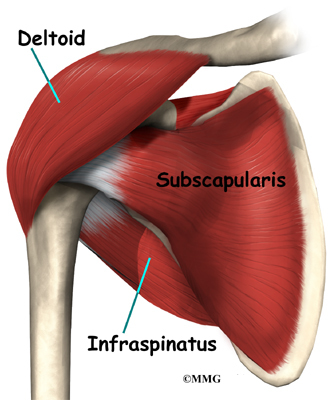I see. I'm sad to hear about all of those issues. The shoulder is a bit of a strange joint. The hip joint is often thought of as a ball & socket type of joint. Think of it like a golf ball in a cup. The ball is very secure, gives a good range of motion. Not great. But good.
The shoulder on the other hand, is also known as a ball and socket joint. To compare it to the hip joint, an analogy would be a golf ball and a small soup bowl. Allows a lot of range of motion. Actually a lot. The downside to this excessive range of motion, being able to take your arms in front of your body, to the side (and it's variations) and quite behind your torso, it's open to a lot of injuries.
It's made up of a lot of muscles. 11 actually (see
here for their names). There are three bones that operate as levers. Four of those muscles create your rotator cuff, which is a pretty common injury 'zone'. These muscles are the the supraspinatus, infraspinatus, teres minor and the subscapularis.
These are the clavicle (collarbone), the scapula (shoulder blade), and the humerus (upper arm bone). On a bit of a side note, when you hit your funny bone (your elbow usually...it effects your humerus....get it!!)
Let us know how you go with the physio.


